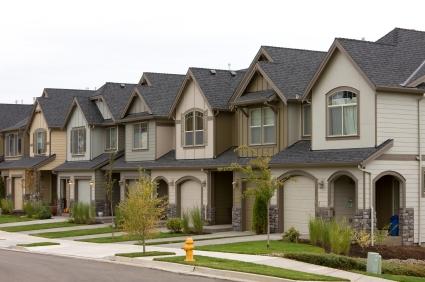Qualifying for a mortgage loan modification can be rough. With all the horror stories out there, you can't blame some borrowers for just not wanting to try. But there are some general guidelines that can give you a pretty good idea of whether you can succeed or not.
Part of the confusion is because lenders have their own standards apart from the government's Home Affordable Modification Program (HAMP). For example, HAMP guidelines specifically state that you don't have to be delinquent on your mortgage to qualify. However, many lenders won't consider you for the program until you've started missing payments.
Another thing is that HAMP isn't the only type of loan modification out there. In fact, you're about twice as likely to qualify for a non-HAMP loan modification as you are to get one under the government-backed program. These private, or proprietary, loan modifications are done according to the lender's own rules, whereas HAMP sets forth certain requirements that lenders must adhere to.
That being said, there are some basic guidelines that you have to meet to qualify for any type of loan modification:
You have to be suffering a financial hardship.
This may be a loss of a job or reduced income, a serious illness, costly medical bills, a balloon payment due on your mortgage, a divorce or excessive debt are all examples. A loss of equity or the fact that your home has lost value is not considered a qualifying financial hardship by itself.
In most cases, you have to be able to show the situation is an enduring one that is not likely to improve in the foreseeable future - for example, a salesperson who's having a bad year will probably have a difficult time qualifying.
You also have to be without cash reserves that would enable you to continue making your mortgage payments. For example, Chase will not consider you for a loan modification if you have savings or other cash assets greater than three times your monthly mortgage payment. Retirement savings accounts that penalize early withdrawals are not included.
You have to show you cannot afford your current mortgage payments.
It doesn't matter if you're financially stressed, if the bank thinks you can find a way to meet your payments, they're not going to approve you. This is one reason why many lenders require you to actually be in default before they'll consider you for a loan modification - if you're still making your payments, they'll figure you can still afford them.
To qualify, lenders will generally expect that your total recurring debt payments exceed 41 percent of your gross monthly income, with your mortgage exceeding 31 percent. Some will expect an even heavier debt load. They're also going to take a look at what kind of debt you have - if you seem to be making payments on a car you can't afford, or otherwise appear to be living beyond your means, they'll expect you to tighten that up before they approve you for a loan modification.
You have to be able to show that you can stay current on a modified payment schedule.
Lenders aren't going to go to the trouble of giving you a loan modification if you're still going to default anyway. That's why unemployed persons can't qualify for a loan modification, unless they have a spouse who's still working - you need to have some way of making the payments, and unemployment compensation eventually runs out.
You're going to have to be able to document your income, meaning pay stubs or W-2's if you're an employee, or tax returns, bank statements or profit-and-loss statements if you're self-employed. If you're depending on secondary sources of income to help pay your mortgage, you'll have to document those as well.
The property has to be your primary residence to qualify for a HAMP modification.
This is a hard-and-fast rule with HAMP. However, lenders may be more flexible with private modifications. They may be willing to modify a loan on a rental property, since it produces the income needed to pay the note. In some cases, they may even approve a modification on a second home, if they think they'd take a big loss retaking it in foreclosure. But generally speaking, you have to live there in order to get a loan modification on the mortgage.
Getting a loan modification can be a difficult and frustrating process. But nearly 700,000 U.S. homeowners succeeded in obtaining permanent mortgage modifications through the first eight months of 2011, according to the HOPE NOW Alliance. Maybe you can join them.





